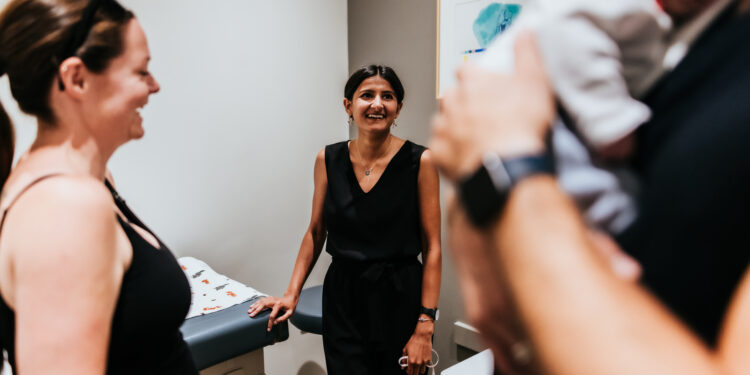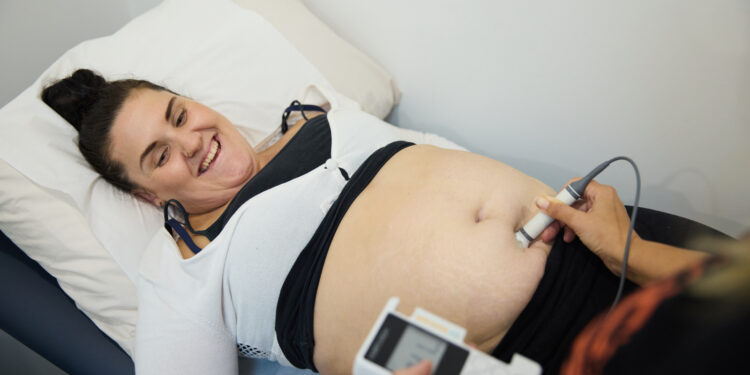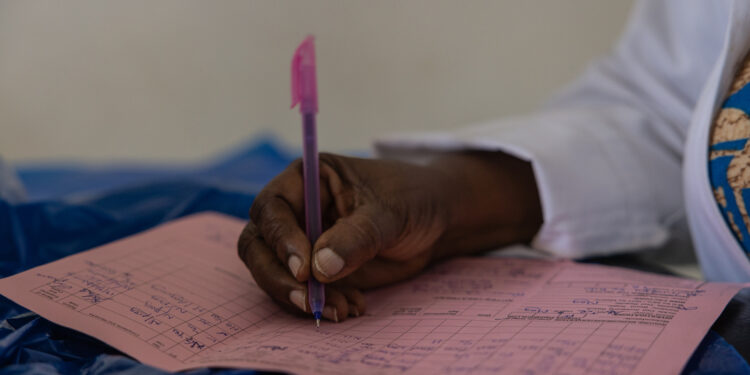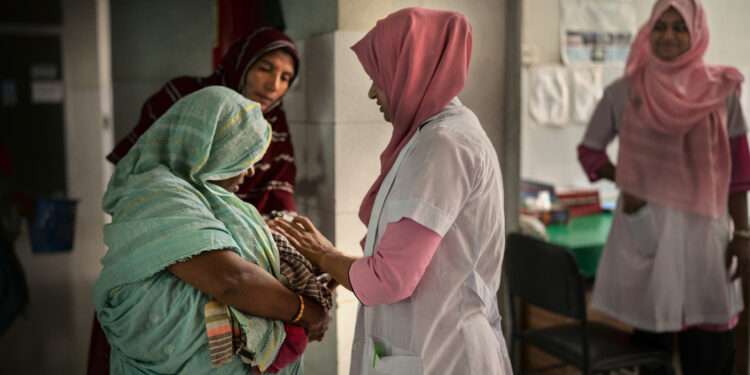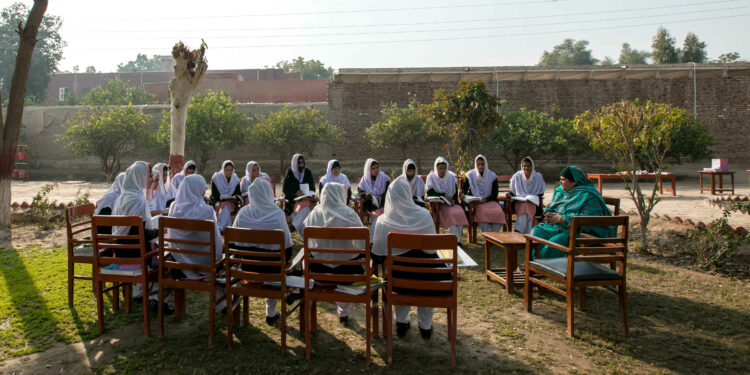Partnership between Indigenous and Non-Indigenous Midwives

Background
Over the past two decades, Indigenous Peoples have led an international movement, largely through various United Nations processes, to recognise and honour the unique realities and rights of Indigenous Peoples. Indigenous Peoples around the world are rebuilding from colonialism and seeking to heal from its intergenerational traumas. Dialogues amongst Indigenous communities and non-Indigenous partners have helped to inform and strengthen intercultural approaches to challenges within health systems globally, yet there is still much to be done.
Indigenous midwives have existed since time immemorial, as foundational pillars in their communities, they are Indigenous people who care for Indigenous communities through the provision of pregnancy and birth care. Colonisation has “deterritorialised” and forced colonial structures upon Indigenous Peoples without their participation and consent. Rectifying this means that Indigenous people have “distinct status and specific needs relative to others”. (1) Despite this, Indigenous midwives worldwide have generally not been included in health service delivery, and they often face open discrimination and for some even criminalisation.
Indigenous midwives and their communities have the right to self-determination in alignment with Indigenous governance systems. This is in accordance with the international human rights framework of the United Nations Declaration on the Rights of Indigenous Peoples (2) , which establishes a specific prerogative for Indigenous peoples and individuals. The UN Permanent Forum on Indigenous Issues (3) has called for the role of Indigenous midwives to be re-evaluated and expanded.
While Indigenous Midwives are active in many communities, thereby helping to accelerate the attainment of the United Nations Sustainable Development Goals, in other communities their knowledge, and contribution remain underrepresented and unrecognised in clinical practice, research, and policy development.
The global Sexual, Reproductive, Maternal, Newborn and Adolescent Health (SRMNAH), disparities between Indigenous and non-Indigenous communities are alarming in both high and low-income countries. (4) Being Indigenous is a determinant of health-inequity perpetuated by ongoing colonial legacies that include racism and discrimination in the health care system. (5) The lack of access to culturally safe SRMNAH care in most Indigenous communities compounds these disparities. (6)
Indigenous midwives take a unique approach to health care that is culturally safe, located within the community, and accessible to marginalised populations, and results in improved outcomes for birther and baby. In Australia, Indigenous midwifery services led by and for Aboriginal and Torres Strait Islanders have resulted in earlier gestational age of first visit, increased antenatal visits, and increased attendance for routine antenatal tests. (7) Similar programs demonstrate clients are more likely to have a spontaneous labour and noninstrumental vaginal birth, and less likely to take epidural, or have an assisted or caesarean birth or perineal trauma. (8) Indigenous birthers feel value in being cared for by Indigenous midwives. (9) A very successful Indigenous midwifery program is found in remote Northern Canada where Indigenous midwifery services have resulted in excellent clinical outcomes while also keeping birth within the community. (10) (11) We support and advocate for Indigenous midwifery educational programmes, practices, and research that support the recovery and growth of Indigenous midwives.
Indigenous midwives can face discrimination within the health care systems in which they provide care. Regulations, formalised education systems, and funding mechanisms continue to favour colonial knowledge systems. Unfortunately, the bio-medical model rarely, if ever, considers Indigenous realities and knowledge. As leaders in SRMNAH, Indigenous midwives are uniquely situated to improve the health and wellbeing of their communities. Consequently, the leadership of Indigenous midwives can provide critical guidance in the development of effective local, national, and global health partnerships, policies and programming that benefit the entire profession and public seeking midwifery services.
Position
Across the globe, midwives and Midwives’ Associations have a responsibility to recognize the causes of health inequities and systemic marginalisation. The International Confederation of Midwives (ICM) is committed to closing the gap in health outcomes between Indigenous and non-Indigenous communities.
ICM acknowledges the significant contributions that Indigenous midwives make to reproductive health and social justice worldwide. It is the position of the ICM that all midwives play an important and unique role in the promotion of equitable and effective partnerships with Indigenous midwives and that ICM recognizes the contributions of Indigenous midwives to the profession of midwifery.
Further, ICM supports the rebuilding and healing of Indigenous communities through the promotion and increased visibility of the expertise of Indigenous midwives. ICM recognises the self-determination and autonomy of Indigenous communities and Indigenous midwives, and honours decision-making that is aligned with the United Nations Declaration on the Rights of Indigenous Peoples and reinforced by the UN Permanent Forum on Indigenous Issues, while also ensuring that Indigenous midwives are recognised in their countries and qualified to legally practise midwifery. ICM encourages all midwives and Midwives’ Associations worldwide to support this growth by elevating the voices of Indigenous midwives within each organisation.
Recommendations
ICM recommends that midwives and Midwives’ Associations incorporate the following principles in all areas of their work to create partnerships, policies, and programming to reflect the crucial role of Indigenous midwives:
- Promote the voices of Indigenous midwives and recognise their unique contributions.
- Build linkages between Indigenous midwives and the non-Indigenous midwifery community so that all reproductive health contributions are valued and enhanced.
- Advocate for the legal recognition in countries of community self-determination in all aspects of reproductive health including education, regulation, and care delivery. This includes legally recognising and funding of midwives that are educated and regulated to their community standards.
- Advocate in member countries for the legal recognition of Indigenous self-determination in all aspects of reproductive health including education, regulation, and care delivery. This includes legally recognising and funding of Indigenous midwives that are educated and regulated to their Indigenous community standards.
- Recognise the systemic effects of colonisation and make measurable goals to identify and close the gaps in health outcomes between Indigenous and non-Indigenous communities.
- Promote cultural safety training for midwives, other health care providers, and educators.
- Recognise that Indigenous midwives may be uniquely positioned to provide high-quality care to Indigenous Peoples to improve the health and well-being of Indigenous communities.
- Share appropriate administrative and organisational support for the development of autonomous Indigenous Midwives’ Associations, or other structures as determined by Indigenous midwives in the country.
- Recognise the role of Indigenous midwives as stewards of knowledge regarding traditions and rites within their communities, which support intergenerational health.
Other Relevant Documents
- Association of Ontario Midwives. (2015). Rural and Remote Maternity Care in Ontario: Analysis and Recommendations. Toronto: Association of Ontario Midwives. Available at: https://www.ontariomidwives.ca/rural
- Anderson, I., Robson, B., Connolly, M., al-Yaman, F., Bjertness, E., King, A., et al. (2016). Indigenous and tribal peoples’ health (The Lancet-Lowitja Institute Global Collaboration): a population study. Lancet, Jul (9)388, 131-57. Available at: https://pubmed.ncbi.nlm.nih.gov/27108232/
- Canadian Institute for Health Information. (2013). Hospital Births in Canada: A Focus on Women Living in Rural and Remote Areas – Executive Summary. CIHI, Ottawa. Available at: https://www.cihi.ca/en
- First Peoples Worldwide. (2017). Who are Indigenous Peoples. Available at: http://www.firstpeoples.org/who-are-indigenous-peoples
- Government of Canada. (2021). Truth and Reconciliation Commission of Canada: Calls to Action. Available at: https://www.rcaanc-cirnac.gc.ca/eng/1524494530110/1557511412801
- Grzybowski, S., Strolll, K., & Kronelson, J. (2011). Distance matters: a population-based study examining access to maternity services for rural women. BMC Health Services Research, (11)147. Available at: https://bmchealthservres.biomedcentral.com/articles/10.1186/1472- 6963-11-147
- McNab, C. (2020). Bringing midwifery back to a northern Canadian community. https://www.who.int/news-room/feature-stories/detail/bringing-midwifery-back-to-anorthern-canadian-community
- Luo, Z., Wilkins, R., Heaman, M., Smylie, J., Martens, P., McHugh, N., et al. (2012). Birth outcomes and infant mortality among First Nations Inuit, and non-Indigenous women by northern versus southern residence, Quebec. Journal of Epidemiology & Community Health, Apr 66 (4), 328-33. Available at: https://pubmed.ncbi.nlm.nih.gov/21051777/
- Napoleon, A., Dickie, K.M. (2009). Language and Culture as Protective Factors for At-Risk Communities. Journal of Aboriginal Health, 5 (1), 6-25. Available at: http://www.ecdip.org/docs/pdf/McIvor_Napoleon%202009.pdf
- Wilson, D., de la Ronde, S., Brascoupé, S., Apale, A. N., Barney, L., Guthrie, B., et al. (2013). Health Professionals Working with First Nations, Inuit and Métis consensus guideline. Journal of Obstetrics & Gynaecology Canada, 35 (6), Supplement 2. Available at: https://pubmed.ncbi.nlm.nih.gov/23870781/
Adopted at Virtual Council meeting, 2021
Due for next review 2023
(1) Marmot, M., Friel, S., Bell, R., Housweling, T., Taylor, S. (2008). Closing the gap in a generation: health equity through action on the social determinants of health. Lancet, 372 (9650), 8-14. https://www.sciencedirect.com/science/article/abs/pii/S0140673608616906
(2) United Nations. (2007) Declaration on the Rights of Indigenous Peoples. Available at: https://www.un.org/development/desa/indigenouspeoples/declaration-on-the-rights-of-indigenous-peoples.html
(3) United Nations Permanent Forum on Indigenous Issues. (2018) Report on the seventeenth session: Recommendations Specifically pertaining to Indigenous women and the girl child. Available at: https://www.un.org/development/desa/indigenouspeoples/wpcontent/uploads/sites/19/2018/12/Recs.-PFII-Ind.-Women-17th-Sess.-Eng.pdf
(4) Stephens, C., Porter, J., Nettleton, C., & Willis, R. (2006) Disappearing, displaced, and undervalued: A call to action for Indigenous health worldwide. The Lancet 367(9527), 2019-28. Available at: https://pubmed.ncbi.nlm.nih.gov/16782493/
(5) Smylie, J., Crengle, S., Freemantle, J., & Taualii, M. (2010) Indigenous Birth Outcomes in Australia, Canada, New Zealand and the United States – an Overview. Open Women`s Health Journal, 4, 7-17. Available at: https://pubmed.ncbi.nlm.nih.gov/23390467/
(6) Smylie, J. Fell, D. Ohlsson, A. & The Joint Working Group on First Nations, Indian, Inuit and Métis Infant Mortality of the Canadian Perinatal Surveillance System. (2010) A review of Aboriginal infant mortality rates in Canada: Striking and persistent Aboriginal/nonAboriginal inequities. Canadian Journal of Public Health, 101 (2), 143-8. Available at: https://pubmed.ncbi.nlm.nih.gov/20524380/
(7) Jan, S., Conaty, S., Hecker, R. (2004) An holistic economic evaluation of an Aboriginal community-controlled midwifery programme in Western Sydney. Journal of Health Services Research & Policy, 9 (1), 14-21. Available at: https://doi.org/10.1258/135581904322716067
(8) Kildea, S., Stapleton, H., Murphy, R., Kosiak, M., & Gibbons, K. (2013) The maternal and neonatal outcomes for an urban Indigenous population compared with their non-Indigenous counterparts and a trend analysis over four triennia. BMC Pregnancy Childbirth, Aug 30;13:167. Available at: https://pubmed.ncbi.nlm.nih.gov/24000821/
(9) West, R., Gamble, J., Kelly, J., Milne, T., Duffy, E., Sidebotham, M. (2016) Indigenous birthers feel value in being cared for by Indigenous midwifery students. Women and Birth. 29(6), Epub Jul 5. 524-530. Available at: https://pubmed.ncbi.nlm.nih.gov/27396296/
(10) Van Wagner, V., Epoo, B., Nastapoka, J., & Harney, E. (2007) Reclaiming Birth, Health, and Community: Midwifery in the Inuit Villages of Nunavik, Canada. Journal of Midwifery Womens Health. Jul-Aug 52(4), 384-391. Available at: https://pubmed.ncbi.nlm.nih.gov/17603961/
(11) Van Wagner, V., Osepchook, C., Harney, E., Crosbie, C., & Tulugak, M. (2012) Remote midwifery in Nunavik, Québec, Canada: outcomes of perinatal care for the Inuulitsivik health centre, 2000-2007. Birth, Sep 39(3), 230-7. Available at: https://pubmed.ncbi.nlm.nih.gov/23281905/
PS2020_001 V2020

